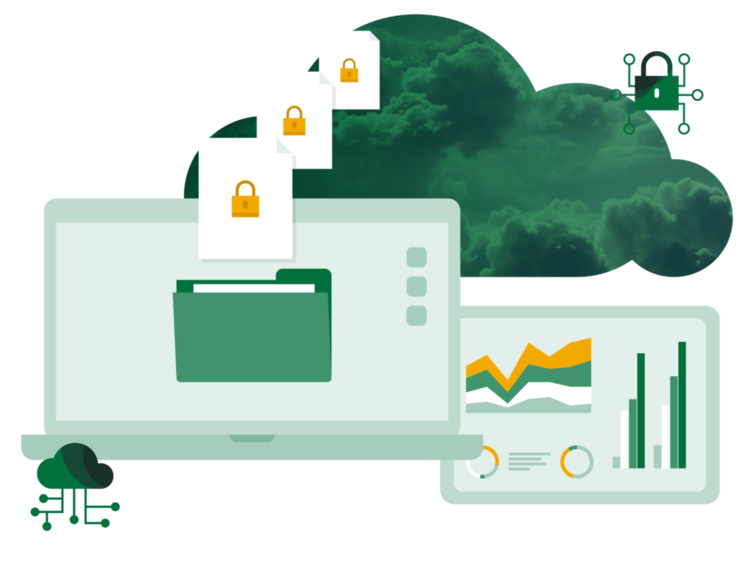UCaaS Migration Readiness: Preparing Your Network, Endpoints, and Team
Migrating from an on-premises PBX or VOIP system to a cloud-based UCaaS solution, such as Webex Calling or Microsoft Teams, can be a pivotal step for organizations seeking greater flexibility, scalability, and modern collaboration capabilities. However, a successful UCaaS migration requires more than just flipping a switch.
From network infrastructure readiness and endpoint security to feature mapping, call routing, and compliance with E911 regulations, every detail matters. Explore these essential considerations and best practices to help you navigate your UCaaS journey with confidence.
9 Essential Steps and Strategies for Navigating Your UCaaS Transition
1. Network Infrastructure Readiness
Migrating to UCaaS is more than a technology upgrade, it’s a transformation of how your organization communicates and collaborates. The foundation of a successful migration starts with a robust, resilient network infrastructure. Before making the move, it’s critical to assess whether your network can support cloud calling and collaboration, even in the face of unexpected outages or increased demand.
Is Your Network Ready for UCaaS? Key Questions to Ask:
Do you have the network stability and redundancy needed to support cloud calling in alignment with your organization’s vertical and business requirements in the event of an internet outage that could affect your UCaaS solution and business operations?
Is UCaaS survivability a part of your business continuity plan and are you aware of the features and potential limitations while in a failover system state?
2. Softphone Endpoint Security
As organizations embrace cloud-based communications, securing every device and application becomes essential. Softphones and mobile apps are powerful tools, but they can introduce vulnerabilities if they are not properly managed.
How Secure Are Your UCaaS Endpoints and Mobile Apps?
Have you considered implementing a Unified Endpoint Management (UEM) or Mobile Device Management (MDM) solution to secure devices and mobile apps that run UCaaS softphones and other ancillary services (e.g. shared file access) that are usually integrated for a single pane of glass user experience by could present security risks if not appropriately locked-down?
3. Solution Features
Not all UCaaS platforms are created equally. Understanding how your current system’s features translate to the cloud, and what new capabilities are available—will help you maximize value and avoid surprises.
Do Your UCaaS Features Meet Business Needs? Ask Yourself:
Are you aware of how current on-prem PBX or VOIP system features translate to what is available on the UCaaS platform?
Have you considered other SaaS add-ons to integrate with your UCaaS solution (e.g. device paging, faxing, call recording, call detail record management)?
4. Endpoint Compatibility and Headsets
The right hardware can make or break the user experience during a UCaaS migration. Ensuring compatibility and investing in certified devices will smooth the transition and support productivity.
Are Your Devices Ready for UCaaS? Key Compatibility Questions:
Have you validated if your current phone endpoints are compatible with the UCaaS solution by upgrading to a different firmware?
If you're moving away from physical phones, have you considered investing in certified headsets for softphone use with the new UCaaS solution?
5. Telephone Number and Call Routing
Migrating phone numbers and configuring call routing are critical steps that impact business continuity. Careful planning ensures calls flow seamlessly during and after the transition.
Is Your Call Routing Strategy Migration-Ready? Consider These Points:
Will you port your DIDs to the cloud solution, or will telephone numbers ingress and egress on-prem first using existing circuits and then route to and from the cloud via sessions border controllers (SBCs)? Are there any existing on-prem integrations that still need to route calls back and forth with the new UCaaS solution for the foreseeable future?
6. E911
Ensuring emergency services can accurately locate and respond to calls is a non-negotiable requirement for any communications system. During a UCaaS migration, maintaining compliance with E911 regulations, both federal and state, is essential for protecting your people and your organization. Planning ahead can help you reuse existing configurations and avoid costly mistakes.
Is Your E911 Strategy Compliant and Migration-Ready? Key Questions to Consider:
Are you able to reuse some of the existing E911 configurations and mappings from your current on-prem system, so that you don’t have to recreate the wheel when moving to UCaaS?
How will you stay in compliance with Federal (Kari’s Law and RAY BAUM’S Act) and State E911 laws on your new cloud solution for both hard phones and mobile softphone endpoints?
7. Migration Strategy
A well-planned migration strategy is the difference between a smooth transition and costly disruptions. Whether you’re moving all at once or taking a phased approach, understanding how your legacy systems and new UCaaS platform will interact during the transition is essential. Careful coordination helps minimize downtime and ensures business continuity throughout the migration process.
Is Your Migration Strategy Built for Success? Ask Yourself:
If you aren’t migrating during a single event, will the current on-prem system and the UCaaS platform need to continue to interface with and route calls with each other over the course of the transitionary period?
If you are porting your telephone numbers to the cloud, are you aware of potential porting time-of-day constraints that may affect your migration approach and timing sequences?
8. End User Adoption and Training
A well-planned migration strategy is the difference between a smooth transition and costly disruptions. Whether you’re moving all at once or taking a phased approach, understanding how your legacy systems and new UCaaS platform will interact during the transition is essential. Careful coordination and end user training helps minimize downtime and ensures business continuity throughout the migration process.
Is Your Migration Strategy Built for Success? Ask Yourself:
What steps will ensure that your end users are comfortable, successful, and productive with the new UCaaS solution from day one?
How can the users be prepared beforehand to ensure the least-disruptive migration approach that has minimal impact to business operations?
9. AI
A successful UCaaS migration isn’t just about technology—it’s about people as well. Ensuring your team is comfortable and confident with the new platform is key to maximizing productivity and minimizing disruption. Proactive training and thoughtful change management can make all the difference in user satisfaction and long-term success as well as leveraging potential AI capabilities with the new cloud platform.
Are Your Users Prepared for UCaaS? Questions to Guide Your Training Plan:
Are you aware of the AI capabilities and roadmaps for the UCaaS solution?
Can you leverage AI to assist in reviewing and parsing existing configurations, staging data for your UCaaS transition, or optimizing your migration plan?
Ready to make the move to the cloud?
Burwood Group can help you assess your cloud readiness, plan a well-orchestrated migration with minimal business impact, and ensure your team is set up for success. Contact us today to schedule your UCaaS Readiness Assessment and start your journey with confidence.




